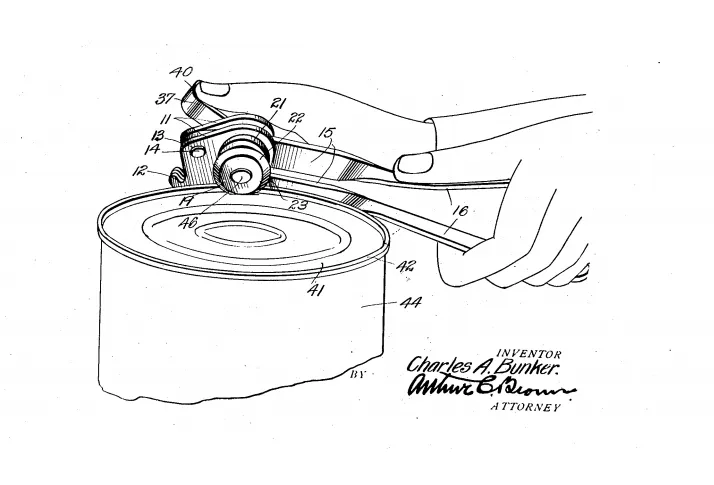Why the Can Opener Wasn’t Invented Until Almost 50 Years After the Can
The first ‘can opener’ was a hammer and chisel
/https://tf-cmsv2-smithsonianmag-media.s3.amazonaws.com/filer/92/38/9238d024-d6f7-4d28-b42b-b393092d485c/screen_shot_2017-08-23_at_115204_am.png)
How did the first tin cans get opened? A chisel and a hammer, writes Kaleigh Rogers for Motherboard. Given that the first can opener famously wasn’t invented for about fifty years after cans went into production, people must have gotten good at the method. But there are reasons the can opener took a while to show up.
Our story starts in 1795, when Napoleon Bonaparte offered a significant prize “for anyone who invented a preservation method that would allow his army’s food to remain unspoiled during its long journey to the troops’ stomachs,” writes Today I Found Out. (In France at the time, it was common to offer financial prizes to encourage scientific innovation–like the one that led to the first true-blue paint.) A scientist named Nicolas Appert cleaned up on the prize in the early 1800s, but his process used glass jars with lids rather than tin cans.
“Later that year,” writes Today I Found Out, “an inventor, Peter Durand, received a patent from King George III for the world’s first can made of iron and tin.” But early cans were more of a niche item: they were produced at a rate of about six per hour, rising to sixty per hour in the 1840s. As they began to penetrate the regular market, can openers finally started to look like a good idea.
But the first cans were just too thick to be opened in that fashion. They were made of wrought iron (like fences) and lined with tin, writes Connecticut History, and they could be as thick as 3/16 of an inch. A hammer and chisel wasn’t just the informal method of opening these cans–it was the manufacturer’s suggested method.
The first can opener was actually an American invention, patented by Ezra J. Warner on January 5, 1858. At this time, writes Connecticut History, “iron cans were just starting to be replaced by thinner steel cans.”
Warner’s can opener was a blade that cut into the can lid with a guard to prevent it from puncturing the can. A user sort of sawed their way around the can’s edge, leaving a jagged rim of raw metal as they went. “Though never a big hit with the public, Warner’s can opener served the U.S. Army during the Civil War and found a home in many grocery stores,” writes Connecticut History, “where clerks would open cans for customers to take home.”
Attempts at improvement followed, and by 1870, the basis of the modern can opener had been invented. William Lyman’s patent was the first to use a rotary cutter to cut around the can, although in other aspects it doesn’t look like the modern one. “The classic toothed-wheel crank design” that we know and use today came around in the 1920s, writes Rogers. That invention, by Charles Arthur Bunker, remains the can opener standard to this day.
